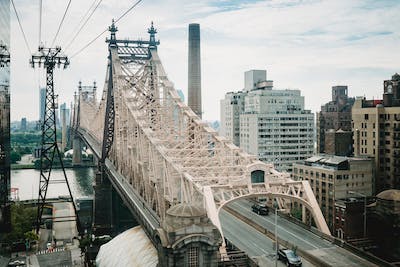Exploring New York: A Journey Through Time and Culture

Exploring New York: A Journey Through Time and Culture
Exploring the Rich Tapestry of New York: A Journey Through Time and Culture
New York City, often referred to as the “Big Apple,” is a metropolis like no other. With its towering skyscrapers, bustling streets, and diverse population, it’s easy to get lost in the whirlwind of modernity that defines this iconic city. However, beneath the glittering façade lies a deep and complex history that stretches back centuries. In this exploration of New York, we will take a journey through time and culture to uncover the roots of this vibrant city.
The Birth of a City
New York’s history predates its status as a city. The first European settlement in the area dates back to the early 17th century when the Dutch West India Company established New Amsterdam in 1626. The city’s prime location on the southern tip of Manhattan Island made it an ideal hub for trade and commerce. This strategic positioning would prove pivotal in shaping the city’s destiny.
In 1664, New Amsterdam fell to the English, who renamed it New York in honor of the Duke of York, later King James II of England. Under English rule, the city continued to thrive as a center of commerce, attracting settlers from around the world. By the turn of the 18th century, New York had grown significantly, with a diverse population representing various nationalities, religions, and cultures.
Colonial New York: A Melting Pot of Cultures
The 18th century was a tumultuous time in New York’s history. The city played a significant role in the American Revolutionary War, serving as the British headquarters for much of the conflict. This period saw the rise of influential figures like Alexander Hamilton and George Washington, whose legacies are still celebrated today.
The streets of colonial New York were teeming with a rich tapestry of cultures. Dutch, English, German, and other European settlers coexisted with enslaved Africans and indigenous peoples. This cultural amalgamation laid the foundation for the city’s enduring diversity and openness.
19th Century: The Rise of Gotham
The 19th century marked a period of unprecedented growth and transformation for New York. The construction of the Erie Canal in 1825 connected the city to the Great Lakes and the western frontier, solidifying its status as the nation’s primary port. As a result, New York became an economic powerhouse, attracting waves of immigrants seeking economic opportunities and a chance at the American dream.
During this time, neighborhoods like Five Points and the Lower East Side became emblematic of the immigrant experience, with Irish, Italian, Jewish, and other communities forming close-knit enclaves. This period also witnessed the development of iconic landmarks such as Central Park and the Brooklyn Bridge, which continue to captivate visitors today.
The Gilded Age and Beyond
The late 19th century and early 20th century saw New York enter its Gilded Age, a period of unprecedented wealth and opulence. Millionaires like Andrew Carnegie, John D. Rockefeller, and J.P. Morgan amassed enormous fortunes and built grand mansions along Fifth Avenue. The city’s cultural scene flourished, with the opening of Carnegie Hall, the Metropolitan Opera House, and the American Museum of Natural History.
However, beneath the glittering surface of affluence, New York also grappled with social and economic disparities. The Triangle Shirtwaist Factory fire in 1911 highlighted the harsh working conditions faced by many immigrants in the city’s burgeoning garment industry, leading to significant labor reforms.
The Jazz Age and Harlem Renaissance
The 1920s marked the Jazz Age in New York, characterized by a vibrant cultural scene and a newfound sense of liberation. Harlem, in particular, emerged as the epicenter of African American culture during the Harlem Renaissance. Jazz clubs like the Cotton Club hosted legendary performers like Duke Ellington and Cab Calloway, while writers like Langston Hughes and Zora Neale Hurston explored the complexities of African American life through their literature.
This period of artistic innovation and social progress left an indelible mark on the city, fostering a legacy of cultural diversity and creative expression that endures to this day.
The Great Depression and Post-War Transformation
The 20th century brought both triumphs and tribulations to New York. The Great Depression of the 1930s cast a shadow over the city, leading to economic hardship and unemployment for many. However, the city rebounded during World War II, as its industries played a critical role in the war effort.
After the war, New York experienced a post-war boom, with suburbanization and infrastructure projects like the construction of the United Nations Headquarters and the Verrazano-Narrows Bridge reshaping the city’s landscape. The 1950s and 1960s saw the rise of cultural movements like the Beat Generation and the counterculture, with figures like Jack Kerouac and Bob Dylan finding inspiration on the streets of New York.
Modern New York: A Global Hub
Today, New York stands as a global metropolis, known for its cultural diversity, economic power, and iconic skyline. It remains a symbol of opportunity, attracting individuals from around the world in pursuit of their dreams. The city’s five boroughs—Manhattan, Brooklyn, Queens, the Bronx, and Staten Island—each offer their unique charm and character.
From the glittering lights of Times Square to the tranquility of Central Park, from the thriving arts scene in Chelsea to the vibrant culinary offerings of Flushing, New York continues to evolve while embracing its storied past. It is a city that simultaneously preserves its history and embraces innovation, making it a dynamic and ever-changing destination.
Conclusion: A City of Endless Discovery
Exploring New York is like peeling back the layers of a historical and cultural onion, each layer revealing a new facet of this remarkable city. From its humble beginnings as a Dutch trading post to its current status as a global hub, New York’s journey through time and culture is a testament to the enduring spirit of human enterprise and creativity.
As we traverse the streets and neighborhoods of this city, we encounter a mosaic of cultures, histories, and stories that have converged to create the New York we know today. It is a city of endless discovery, where the past and present coexist in a vibrant tapestry that continues to captivate and inspire all who walk its streets.



